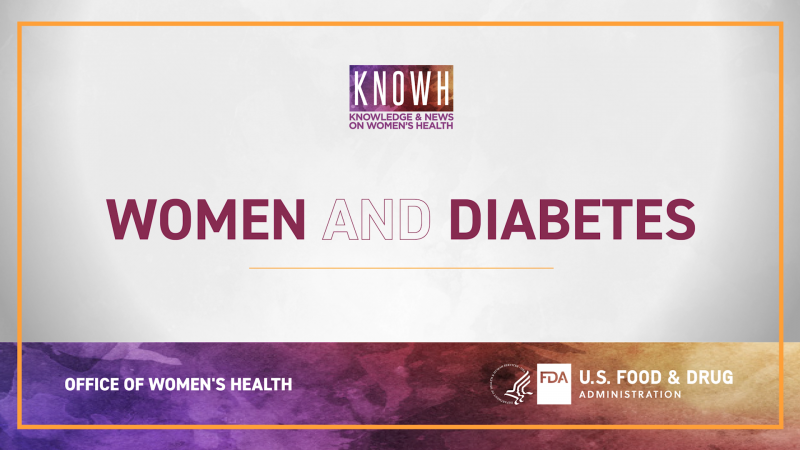Knowledge & News on Women: Diabetes Awareness Month
Be Empowered: Understanding Diabetes
November 18, 2021
In honor of Diabetes Awareness Month this November, we are sharing valuable information and resources to help women and their loved ones who have been diagnosed with diabetes. “Diabetes is a chronic health condition that occurs when levels of blood glucose—also known as blood sugar—are too high,” Dr. Kaveeta P. Vasisht, Associate Commissioner for Women’s Health, explains in our latest video Be Empowered: Understanding Diabetes.
“Over time, having too much glucose in your body can cause serious health problems.” It is a serious illness affecting more than 30 million people in the United States.
There are three main types of diabetes: Type 1, Type 2, and gestational diabetes. Type 1 diabetes is caused by an autoimmune reaction that destroys the cells in the pancreas that make insulin. Type 2 diabetes occurs when the body does not make enough insulin or does not
use insulin well. Gestational diabetes happens when the body cannot make enough insulin during pregnancy. “If you have gestational diabetes, you are more likely to develop Type 2 diabetes,” notes Dr. Vasisht.
Did you know that diabetes affects women and men differently? Compared to men with diabetes, women with diabetes have a higher risk of heart disease and other diabetes-related complications such as blindness, kidney disease, and depression. Hormone-level fluctuation can also affect diabetes. “Changes in hormone levels that occur around the time of the menstrual cycle can make blood glucose levels harder to predict,” Dr. Vasisht explains.
Not only does diabetes affect women differently than men, but the disease’s impact also differs among women. African American, Hispanic, American Indian/Alaska Native, and Asian/Pacific Islander women are more likely to have diabetes than white women.
The good news is that diabetes can be managed! It’s important to know the facts, symptoms, and treatment options. “Discovering that you have diabetes can be shocking,” says Rashetta Fairnot, Director of Outreach and Communications. “Fortunately, we know a lot about how to help women manage their diabetes, including healthy eating, staying physically active, monitoring blood glucose levels, and taking prescribed medications.”
Visit the resources below to get answers to questions to help support diabetes decisions. Each of these resources can be easily shared with others living with diabetes and the women in your community.
Diabetes Medicines
Insulin
FDA Women and Diabetes
Blood Glucose Monitoring Devices
Food Safety for Diabetes
Your Glucose Meter




